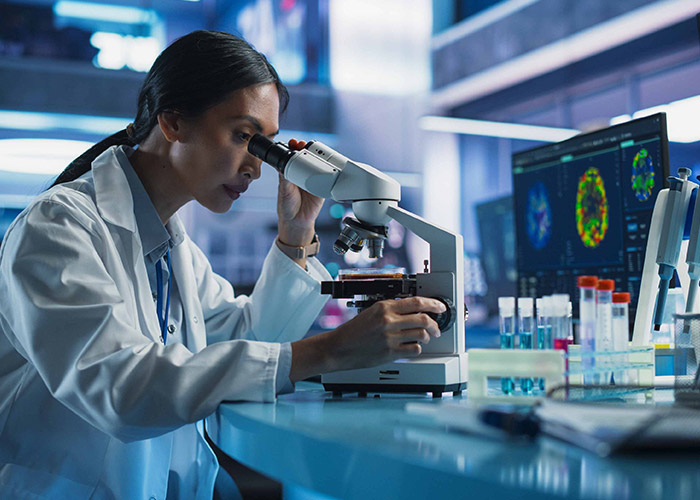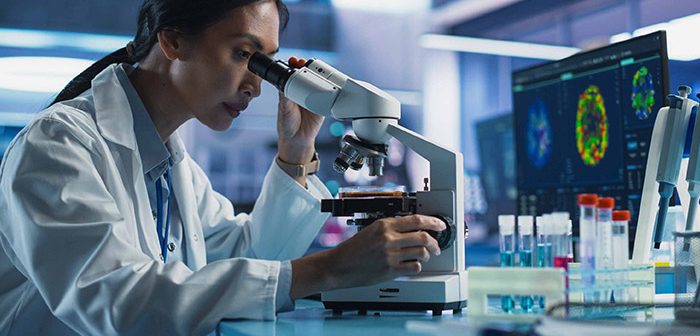
Teams developing hydrogels for more effective reconstructive surgeries, advancing next-generation solar cell manufacturing, creating novel rare-earth magnets, using artificial intelligence to help design carbon neutral construction methods and establishing a hydrogen catalysis commercialisation hub are just some of the recipients of AUD6 million in funding to spur international science and technology collaborations.
Nine Australian knowledge-makers and innovators in AI, hydrogen, manufacturing and more will be sharing in catalytic grants from the Global Science and Technology Diplomacy Fund – Strategic Element (GSTDF-SE), announced today by the Minister for Industry and Science, Ed Husic, and delivered by Australia’s two academies for science and technology.
These grants will allow Australian teams to collaborate with partners in countries including Japan, the Republic of Korea, Thailand, Singapore and New Zealand on strategic science and tech projects capable of bringing direct benefits to advanced industries.
Recipients include Associate Professor Markus Müllner from the University of Sydney who will be working with researchers and industry in the Republic of Korea to deliver a new type of injectable hydrogel for versatile medical applications, from reconstructive surgery to tissue engineering and drug delivery.
Professor Rose Amal from the University of New South Wales will be collaborating with teams in Japan, Indonesia, Malaysia and Singapore to create a research and development hub coordinating global efforts to commercialise solar hydrogen production technology.
This first round of the GSTDF-SE advances science and technology development in Australia and plays a pivotal role in building a thriving innovation ecosystem in our global region.
Australian Academy of Technological Sciences and Engineering CEO Kylie Walker said the fund is filling a critical need in Australian innovation, as demonstrated by the strong demand for grants under the scheme.
“Research and development teams around Australia are vying for the opportunity to work globally on important challenges,” she said. “Early support from the Global Science and Technology Diplomacy Fund will super-charge impactful international collaborations and bring new technologies closer to widespread implementation.”
“Importantly, this fund is building advanced STEM skills, networks and long-term relationships across Australia and our region. Through global collaboration with key partners on advanced technology, we will highlight and promote regional capability consistent with Australia’s national interest and potential.”
Australian Academy of Science Chief Executive, Anna-Maria Arabia said stimulating international scientific collaboration in areas of national interest enables industrial and economic growth.
“Science and technology exchange plays an increasingly important role in Australia’s diplomatic efforts, particularly in the current geopolitical environment,” she said. “The Global Science and Technology Diplomacy Fund is strengthening links between Australian science and technology leaders and regional partners.”
The Australian Academy of Technological Sciences and Engineering and the Australian Academy of Science collaborate to deliver the grants which are funded by the Department of Industry, Science and Resources. These grants leverage the insights and advice of the Academies’ expert fellowships, and their long history of leading global initiatives that deliver results for Australian science and technology.
Aligned with Australia’s science priorities and running over four years, the Global Science and Technology Diplomacy Fund is supporting international collaboration with strategically important partner nations to enhance Australia’s capability and profile in science and technology research and its application. Simultaneously helping commercialise cutting-edge products and services, and strengthening R&D collaborations, GSTDF-SE provides a foundation for our modern industries of the future to grow and thrive.
The full list of recipients include:
-
Professor Rose Amal from The University of New South Wales. Advancing Sunlight-to-Hydrogen Conversion for a Sustainable Future. Partner countries: Japan, Indonesia, Malaysia and Singapore.
-
Professor Tuan Ngo from The University of Melbourne. Building a Sustainable Future Toward Net Zero: A Whole-Life-Cycle Approach to Digital Manufacturing of Carbon-Neutral Modular Panels for Affordable Housing. Partner countries: Japan, Malaysia, New Zealand, Thailand and Vietnam.
-
Associate Professor Ebinazar Namdas from The University of Queensland. Global Hub of Advanced Materials and Integrated Optoelectronics (GH-AMIO). Partner countries: Japan, Republic of Korea, Malaysia and Thailand.
-
Professor Zongyou Yin from The Australian National University. Solar Thermal-Plasmonic Seawater Splitting for Hydrogen Production. Partner countries: Japan and Singapore.
-
Professor Simon Ringer from The University of Sydney. An Additive Manufacturing Solution to the Critical Minerals Supply Challenges in Rare-Earth Permanent Magnets. Partner countries: Japan.
-
Associate Professor Markus Müllner from The University of Sydney. Injectable Hydrogels with Biomimetic Properties. Partner countries: Republic of Korea.
-
Professor Shujuan Huang from the Macquarie University. Advanced Green Manufacturing and Automation Technology for Next-Generation Solar Cells. Partner countries: Republic of Korea.
-
Associate Professor Rosalie Hocking from Swinburne University of Technology. Novel Manufacturing Strategies for Electrolyser Component Manufacture. Partner countries: Thailand.
-
Dr Tom McGoram from The Australian National University. Forging the Future of Space Tech: ANU and ZES Partnership for Advancing Radiation Testing. Partner countries: Singapore.






